Last updated: January 20, 2024
Article
USS INDEPENDENCE

National Archives, 513024.
The first ship built in the Charlestown Navy Yard, USS Independence was also the United States Navy’s first ship-of-the-line, the largest class of ships during this period. Construction on Independence began during the War of 1812 while under constant threat by the British Navy just outside of Boston Harbor. After several years of failing to live up to the hopes of the US Navy because of its unorthodox design and cumbersome size, Independence was razeed (cut down by a deck) to turn the ship into a frigate. This frigate had a much more successful career as the United States flagship of the Mexican-American War. In the final decades of its almost hundred-year career, Independence became a fixture of Mare Island Navy Yard in California as a receiving ship for new sailors.
Bainbridge's Brainchild
In the midst of the War of 1812, Congress authorized the construction of 74-gun ships-of-the-line in order to compete with the powerful British Navy. Commandant of the Charlestown Navy Yard, and former commander of USS Constitution, William Bainbridge quickly got to work planning the new republic’s very first ship of this size. Though he employed shipwright Edmund Hartt and his sons to begin work on USS Independence, Bainbridge’s insistence on carrying out unorthodox modifications during construction caused tension between the Commandant and the builders. Eventually, the Hartt family walked off the job site, and Bainbridge replaced them with Josiah Barker.
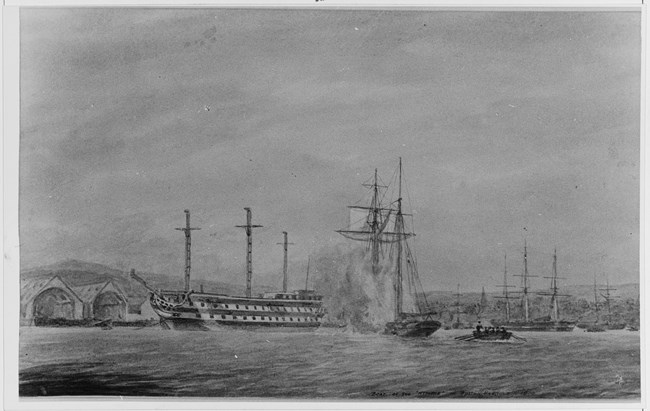
Naval History and Heritage Command, USN 902802.
Under Barker, USS Independence took form as Bainbridge envisioned it. To assist with the construction of the ship during inclement weather, Bainbridge ordered workers to build the Navy Yard's first ship house, which they completed in 1813. Constructing a ship of this size was a challenge for the Navy Yard, and this was made more difficult due to the near constant threat of attack USS Independence faced from British ships. On June 1, 1814, HMS Shannon captured USS Chesapeake just outside of Boston Harbor, leaving the Navy Yard vulnerable. The Navy quickly armed the nearly finished Independence in the event of British attack. Two weeks later, Marines from HMS Nymph slipped into Boston Harbor and burned a sloop within a mile of the Navy Yard. They even attempted to launch the blazing ship into Independence.
This attack failed and the Navy finally, after several failed attempts, launched USS Independence on June 22, 1814. The massive 90-gun ship stayed in Boston Harbor for the remainder of the war to defend the city. A month after its launching, a massive windstorm unceremoniously destroyed the ship house where Independence was constructed, signaling an uncertain future for the United States' first ship-of-the-line.
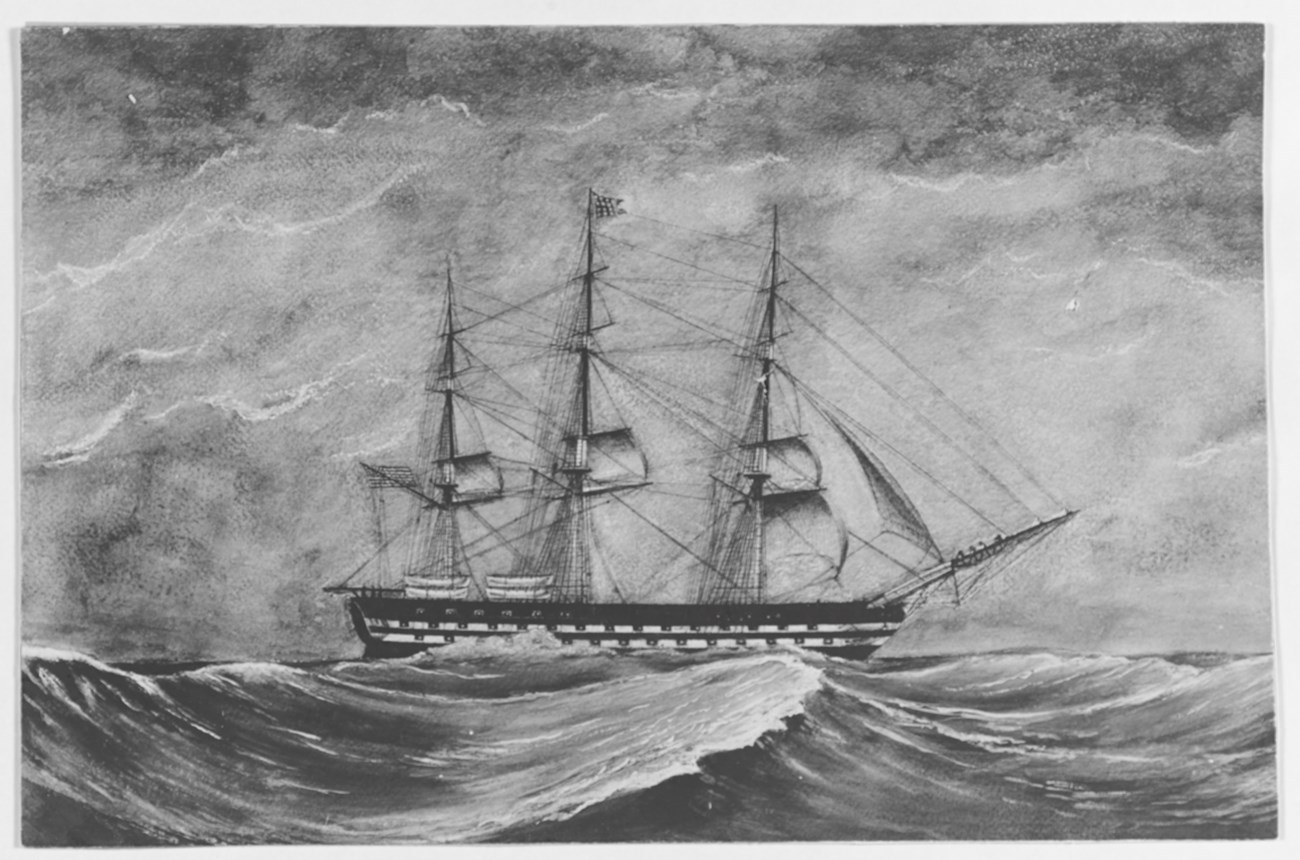
Naval History and Heritage Command, NH 53101.
Cumbersome Flagship
USS Independence never saw combat during the War of 1812, but in 1815 it sailed to the Mediterranean Sea to reinforce US vessels combating Barbary pirates. Though this massive ship displayed an imposing show of force, by the time Independence reached the Mediterranean, the United States had already started negotiating a peace agreement with the pirates.
USS Independence remained in active service until 1822; however, its large size made the ship unwieldy and smaller frigates such as USS Constitution were proving to be much more effective. On March 19, 1822 Independence returned to Boston where it was decommissioned and placed in ordinary (out of service for repair) until 1836.
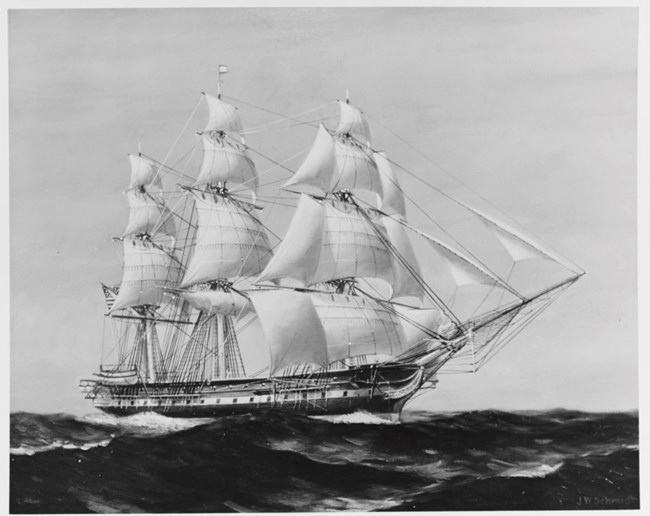
Naval History and Heritage Command, NH 53102.
New Life as a Frigate
In 1836, after over a decade at Boston Harbor, USS Independence was razeed (cut down) to a 54-gun frigate. This decision ultimately transformed Independence into the fastest and most powerful frigate in the United States Navy. In the following years, Independence traveled to Russia, Brazil, Sardinia, and Hawaii.
In 1846, USS Independence saw combat for the first time as Commodore William Shubrick’s flagship during the Mexican-American War. Initially staging at Monterey Bay, Independence participated in a blockade of the Mexican coast, captured Mexican ship Correo, and landed Marines who occupied Mazatlán.
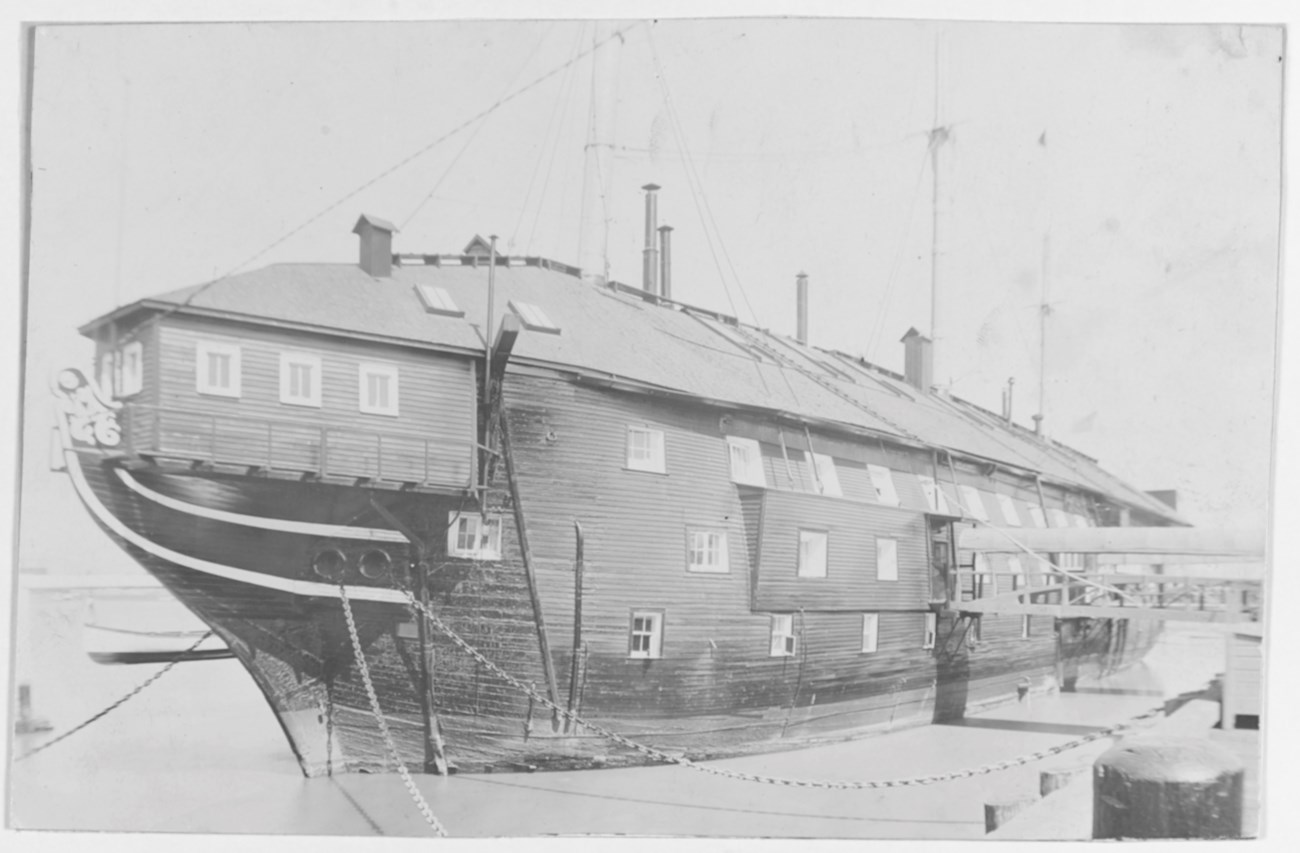
Naval History and Heritage Command, NH 53103.
Receiving Ship of Mare Island
After the Mexican-American War, USS Independence served as an active ship for nearly another decade. However, by the late 1850s with the advent of steam power, Independence was starting to show its age. In 1857, Independence reached Mare Island Navy Yard in California to begin its final career as a receiving ship.
As a receiving ship, Independence served as quarters to seaman recruits who had not yet been assigned to a seaworthy vessel. During the ship's time at Mare Island, other Charlestown Navy Yard constructed screw sloops, USS Hartford and USS Narragansett, joined USS Independence. USS Independence played this role for over half a century until decommissioned for a final time on November 3, 1912. A year later, the US Navy struck Independence from Navy lists. After being purchased by private owners and an unsuccessful attempt to convert the ship into a floating restaurant, USS Independence was burned for scrap in 1915.
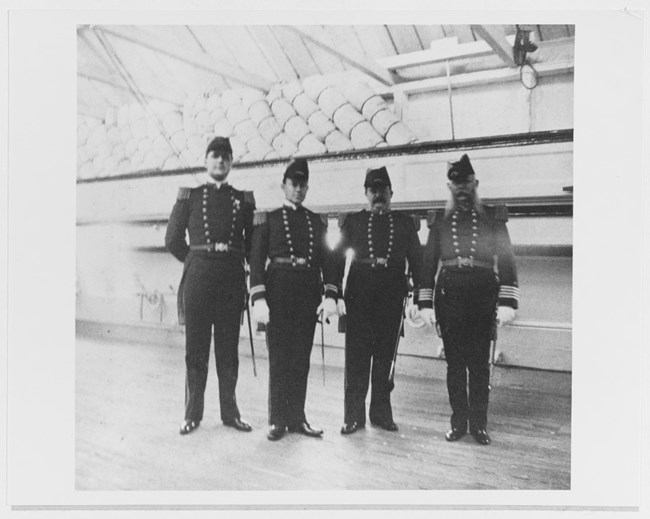
Naval History and Heritage Command, NH 52639.
For a ship that showed little promise in its early years as a cumbersomely large ship-of-the-line, USS Independence became well regarded as a versatile and dynamic vessel during its century long career. As the United States Navy's first ship-of-the-line, flagship frigate of the Mexican-American War, and sturdy receiving ship for over 50 years, USS Independence serves a testament to the craftsmanship and innovation of the Charlestown Navy Yard.
Sources
USS Independence (1814-1913). Naval History and Heritage Command, 2015. https://www.history.navy.mil/our-collections/photography/us-navy-ships/alphabetical-listing/i/uss-independence--1814-1913--0.html.
USS Independence (Ship-of-the-Line). Naval History and Heritage Command, 2015. https://www.history.navy.mil/research/histories/ship-histories/danfs/i/independence-ii.html
Black, Frederick R., Bearss, Edwin C., The Charlestown Navy Yard 1800 - 1842. Boston, Massachusetts: National Park Service, 1984.
Daily Journals of Transactions, 12/27/1815 - 8/18/1846. Boston, Massachusetts: Department of the Navy, National Archives. https://catalog.archives.gov/id/1175009.
